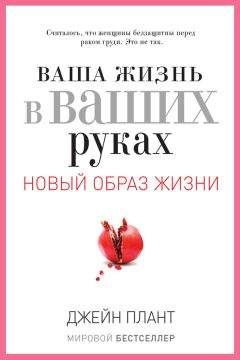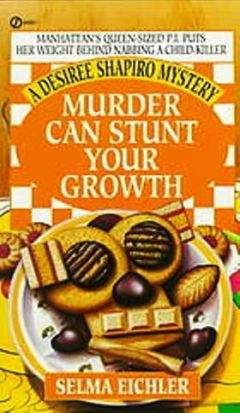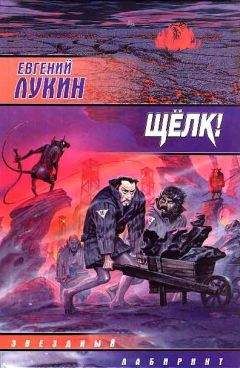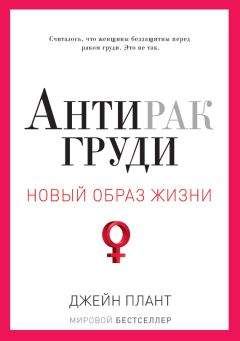(2), 85–95; Gooch, J.L. and others, 1998. Interleukin 4 inhibits growth and induces apoptosis in human breast cancer cells. Cancer Res, 58 (18), 4199–4205; Choki, I. and others, 1998. Osteobiast-derived growth factors enhance adriamycin-cytos-tasis of MCF-7 human breast cancer cells. AnticancerRes, 18 (16A), 4213–4224; Jackson, J.G. and others, 1998, Insulin receptor substrate-1 is the predominant signalling molecule activated by insulin-like growth factor-1, insulin, and interleukin-4 in estrogen receptor-positive human breast cancer cells. Journal of Biological Chemistry, 273 (16), 9994-10 003; Westley,
B.R. and others, 1998. Interactions between the oestrogen and IGF signalling pathways in the control of breast epithelial cell proliferation. Biochemical Society Symposium, 63, 35–44; Sur-macz, E. and others, 1995. Overexpression of insulin receptor substrate 1 (IRS-1) in the human breast cancer cell line MCF-7 induces loss of estrogen requirements for growth and transformation. Clinical Cancer Research, 1 (11), 1429–1436.
37. Untersasser, G. and others, 1999. Proliferative disorders of the aging human prostate: involvement of protein hormones and their receptors. Experimental Gerontology, 34 (2), 275–287; Xu, Z.D., 1999. Hammerhead ribozyme-mediated cleavage of the human insulin-like growth factor-2 ribonucleic acid in vitro and in prostate cancer cells. Endocrinology, 140 (5), 2134–2144; Marelli, M.M. and others, 1999. Luteinizing hormone-releasing hormone agonists interfere with the antagonic activity of the insulin-like growth factor system in androgen-dependent prostate cancer cells. Endocrinology, 140 (1), 329–334; Larnharzi, N. and others, 1998. Growth hormone-releasing hormone antagonist MZ-5-156 inhibits growth of DY-145 human androgen-independent prostate carcinoma in nude mice and suppresses the levels and mRNA expression of insulin-like growth factor-2 in tumors. Proc Natl Acad Sei USA, 95 (15), 8864–8868; Wang, Y.Z. and others, 1998. Sex hormone-induced prostatic carcinogenesis in the noble rat; the role of insulin-like growth factor-1 (IGF-1) and vascular endothelial growth factor (VEGF) in the development of cancer. Prostate, 35 (3), 165–177.
38. He, Y., 1999. Comment on the Association between Insulin-Like Growth Factor-1 (IGF-I) and Bone Mineral Density: Further Evidence Linking IGF-I to Breast Cancer Risk. Journal of Cellular Endocrinology and Metabolism, 84, 1760.
39. Perks, C. M. and Holly, J.M.P., 2000, Insulin-Like Growth Factor Binding Proteins (IGFBPs) in Breast Cancer. Journal of Mammary Gland Biology and Neoplasia, 5, 75–84.
40. Murphy, M.S. and others, 1998. Growth factors and the gastrointestinal tract. Nutrition, 14 (10), 771–774; Buts, J.F., 1998, Bioactive factors in milk, (in French.) Archives de Pediatrie, 5 (3), 298–306.
41. Shen, WH. and others, 1998. Stability and distribution of orally administered epidermal growth factor in neonatal pigs. Life Sciences, 63 (10), 809–820; Rao, R.K. and others, 1998. Bovine milk inhibits proteolytic degradation of epidermal growth factor in human gastric and duodenal lumen. Peptides, 19 (3), 495–504; McCuskey, R.S. and others, 1997. Effect of milk-borne epidermal growth factor on the hepatic microcirculation and Kupfer cell function in suckling rats. Biology of the Neonate, 7 (3), 202–206; Oguchi, S. and others, 1997. Growth factors in breast milk and their effect on gastrointestinal development. Chang Hua Min Kuo Hsiao Ehr Ко I Hsuek Tsa Chih, 38 (5), 332–337.
42. Salomon, D.S. and others, 1999. Cripto: a novel epidermal growth factor (EGF)-related peptide in mammary gland development and neoplasia. Bioessays, 21 (1), 61–70; Chou, YC. and others, 1999. Induction of mammary carcinomas by N-meth-yl-N-nitrosurea in ovariectomized rats treated with epidermal growth factor. Carcinogenesis, 20 (4), 677–684; Kurtz, A. and
others, 1998. Local control of mammary gland differentiation: mammary-derived growth inhibitor and pleiotrophin. Biochemical Society Symposium, 63, 51–69; Taylor, M.R. and others, 1997. Lactadherin (formerly BA46); a membrane-associat-ed gycoprotein expressed in human milk and breast carcinomas, promotes Arg-Gly-Asp (RGD)-dependent cell adhesion. DNA and Cell Biology, 16 (7), 861–869.
43. Zhau, H.J. and others, 1996. Androgen-depressed phenotype in human prostate cancer. Proc. Natl. Acad. Sei. U.S.A., 93 (26), 15 152-15 157.
44. Thornburg, W. and others, 1984. Gastrointestinal absorption of epidermal growth factor in suckling rats. American Journal of Physiology, 246, G80—G85.
45. www.prostatepointers.org/cmyers/pf0696.html
46. Gaull, G.E. and others, 1985. Significance of growth modulators in human milk. Pediatrics, 75 (2), 142–145.
47. Delgrange, E. and others, 1997. Sex related differences in the growth of prolacrinomas: a clinical and proliferation marker study. Journal of Clinical Endocrinology and Metabolism. 82 (7), 2102–2107.
48. Vonderhaar, B.K., 1998, Prolactin: The forgotten hormone of human breast cancer. Pharmacology and Therapeutics, 79 (2), 169–178; Das, R. and others; 1996. Involvement of SHC, GRB2, SOS and RAS in prolactin signal transduction in mammary epithelial cells. Oncogene, 13 (6), 1139–1145; Mershon, J, and others, 1995. Prolactin is a local growth factor in rat mammary tumors. Endocrinology, 136 (8), 3619–3623; Ginsberg, E. and others, 1995. Prolactin secretion by human breast cancer cells. Cancer Res, 55 (12), 2591–2595; Fuh, G. and others, 1995. Prolactin receptor antagonists that inhibit the growth of breast cancer cell lines. J Biol Chem, 270 (22), 13 133-13 137.
49. Leav, I. and others, 1999. Prolactin receptor expression in the developing human prostate and in hyperplastic, dysplastic, and neoplastic lesions. American Journal of Pathology, 154 (3), 863–870; Horti, J. and others, 1998. A phase 2 study of bromocriptine in patients with androgen-independent prostate cancer. Oncology Reports, 5 (4), 893–896; Franklin, R.B. and others, 1997. Prolactin regulation of mitochondrial aspartate aminotransferase and proteinkinase С Molecular and Cellular Endocrinology, 127 (1), 19–25; Janssen, T. and others, 1996. In vitro characterization of prolactin-induced effects on proliferation in the neoplastic LNCaP, DU145, and PC3 models of the human prostate. Cancer, 77 (1), 144–149; Janssen, T. and others, 1995. Organ culture of human tissue as study model of hormonal and pharmacological regulation of benign prostatic hyperplasia and of prostatic cancer, (frans) Acta Urol Belg, 63 (1), 7-14; Oliver, R.T. and others, 1995. New directions with hormone therapy in prostate cancer: possible benefit from blocking prolactin and use of hormone treatment intermittently in combination with immunotherapy. Eur J Cancer, 31A (6), 859–860; Rana, A. and others, 1995. A case for synchronous reduction of testicular androgen, adrenal androgen and prolactin for the treatment of advanced carcinoma of the prostate. Eur J Cancer, 31A (6), 871–875.
50. Hinuma, S. and others, 1998. A prolactin-releasing peptide in the brain. Nature, 393 (6682), 272–276.
51. Smith, S.S. and others, 1986. Presence of luteinising hormone-releasing hormone (LHRH) in milk. Endocrinol Exp., 2 °C2-3), 147–153; Koldovsky, O., 1989. Search for the role of milk borne biologically active peptides for the suckling. J.Nu-tr., 119 (II), 1543–1551; Nair, R.M. and others, 1987. Studies on LHRH and physiological fluid amino acids in human colos-treum and milk. Endocrinolologia Experimentalise 21 (1), 23–30.
52. White, M.E. and others, 1986. Milk progesterone concentrations following simultaneous administration of buserelin and cloprostenol in cattle with normal corporal lutea. Canadian Journal of Veterinary Research, 50 (2), 285–286; Dinsmore, R.P. and others, 1989. Effect of gonadotropin-releasing hormone on clinical response and fertility in cows with cystyic ovaries, as related to milk progesterone concentration and days after partarition. Journal of the American Veterinary Medical Association, 195 (3), 327–330.
53. Berseth, C.I. and others, 1990. Postpartum changes in pattern of gastrointestinal regulatory peptides in human milk. Am J Clin Nutr, 51 (6), 985–990.
54. Berseth, C.I. and others, 1990. Postpartum changes in pattern of gastrointestinal regulatory peptides inhuman milk. Am J Clin Nutr, 51 (6), 985–990.
55. Flood, J.F. and others, 199L Increased food intake by neuropeptide Y is due to an increased motivation to eat. Peptides, 12 (6), 1329–1332.
56. Amarant, T. and others, 1982. Luteinising hormone-releasing hormone and thyrotropin-releasing hormone in human and bovine milk. European Journal of Biochemistry, 127 (3), 647–650; Baram, T and others, 1977. Gonadotropin-releasing hormone in milk. Science, 198 (4314), 300–302.
57. Koike, K. and others, 1997. The pituitary folliculo-stellate cell line TtT/GF augments basal and TRH-inducedprolactin secretion by GH3 cells. Life Sei, 61 (25), 2491–2497; Tyson, J.E. and others, 1975. The influence of prolactine secretion on human lactation./ Clin Endocrinol Met ah, 40 (5), 764–773.
58. Grochowska, R. and others, 1999. Stimulated growth hormone (GH) release in Friesian cattle with respect to GH genotypes. Reproduction Nutrition Development, 39 (2), 171–180; Bourne, R.A. and others, 1977. Serum growth hormone concentrations after growth hormone or thyroid-releasing hormone in cows. Journal of Dairy Science, 60 (10), 1629–1635.
59. Chomczinsky, E and others, 1993. Stimulatory effect of thyroid hormone on growth hormone gene expression in a human pituitary cell line. / Clin Endocrinol Metah, 77 (1), 281–285; Reynolds, A.M., 1991. The effects of chronic exposure to supra physiological concentrations of 3,5,3-triiodo-L-thyronine (T3) on cultured GC cell s. Journal of Cellular. Physiology, 149 (3), 544–547.
60. Tenore, A. and others, 1980. Thyroidal response to peroral TSH in suckling and weaned rats. American Journal of Physiology, 238 (5), E428-430.
61. Slebodzinski, A.B. and others, 1998. Triiodothyronine (T3), insulin and characteristics of 5’-monodiodinase (5’-MD) in mare’s milk from partarition to 21 days post-partum. Reproduction Nutrition Development, 38 (3), 235–244.
62. Fujimoto, N. and others, 1997. Upregulation of the estrogen receptor by triiodothyronine in rat pituitary cell lines. Journal of Steroid Biochemistry and Molecular Biology, 61 (1–2), 79–85.
63. Koldovsky, О., 1989. Search for the role of milk borne biologically active peptides for the suckling. J Nutr, 119 (11), 1543–1551; Buts, J.P., 1998. Bioactive factors in milk, (in French.) Arch Pediatr, 5 (3), 298–306.
64. Faulkner, A., 1998. Insulin-like growth factor concentrations in milk and plasma after growth hormone treatment. Biochemical Society Transactions, 26 (4), S386; Baldini, E. and others, 1994. In vivo cytokinetic effects of recombinant human growth hormone (rhGH) in patients with advanced breast carcinoma. Journal of Biological Regulators and Homeostatic Agents, 8 (4), 113–116; Scheven, B.A. and others, 1991. Effects of recombinant human insulin-like growth factor-1 and -2 (IGF) and growth hormone (GH) on the growth of normal adult human osteoblast-like cells and human osteogenic sarcoma cells. Growth Regulation, 1 (4), 160–167; Hodate, K. and others, 1990, Plasma growth hormone, insuline-like growth factor-1, and milk production response to exogenous human growth hormone-releasing factor analogs in dairy cows. Endocrinolo-gia Japonica, 37 (2), 261–273.
65. Koldovsky, O., 1989. Search for the role of milk borne biologically active peptides for the suckling. J Nutr, 119 (11), 1543–1551; Buts, J.P., 1998. Bioactive factors in milk, (in French.) Arch Pediatr, 5 (3), 298–306.
66. Westrom, B.R. and others, 1987. Levels of immunoreactive insulin, neurotensin, and bombesin in porcine colostreum and milk. / Pediatr Gastroenterol Nutr, 6 (3), 460–465; Ehman, R. and others, 1985. Bombesin, neurotensin and pro-gamma-mel-anotropin in immunoreactants in human milk. Regulatory Peptides, 10 (2–3), 99-105.
67. Shutt, D.A. and others, 1985. Comparison of total and free cortisol in bovine serum and milk colostreum. J Dairy Set, 68 (7), 1832–1834.
68. Vaarala, O. and others, 1998. Cow milk feeding induces antibodies to insulin in children – a link: between cow milk and insulin-dependent diabetes mellitus? Scandinavian Journal of Immunology 47 (2), 131–135; Slebodzinsky, A.B. and others,
1998. Triiodothyronine (T3), insulin and characteristics of 5’-monodiodinase (5’-MD) in mare’s milk from partarition to 21
days post-partum. Reprod Nutr Dev, 38 (3), 235–244; We-strom, B.R. and others, 1987. Levels of immunoreactive insulin, neurotensin, and bombesin in porcine colostreum and milk. J Pediatr Gastroenterol Nutr, 6 (3), 460–465.
69. Ferrando, T. and others, 1990. Beta-endorphin-like and alpha-MSH-like immunoreactivities in human milk. Life Sei, 47 (7), 633–635.
70. http://www.13.waisays.com/cancer2.htm; Newcomb, P.A. and Egan, K.M., 2006. Dairy food and ovarian cancer risk. The Lancet, March 2006, 797–799; Stang, A. and others, 2006. Adolescent milk fat and galactose consumption and testicular germ cell cancer. Cancer Epidemiology and Biomarkers Prevention, 15,2189–2195.
71. Maruuchi, T. and others, 1998. Effects of gonadotropin-releasing hormone agonist on rat ovarian adenocarcinoma cell lines in vitro and in vivo .Japanese Journal of Cancer Research, 89 (9), 977–983; Kuroda, H. and others, 1998. Human chorionic gonadotrophin (hCG) inhibits cisplatin-induced apoptosis in ovarian cancer cells: possible role of up-regulation of IGF-1 by hCG. Int J Cancer, 76 (4), 571–578; Kurbacher, C.M. and others, 1995. Influence of luteinising hormone on cell growth and С A 125 secretion of primary epithelial ovarian carcinomas in vitro. Tumour Biology, 16 (6), 374–384; Manetta, A. and others, 1995. Inhibition of growth of human ovarian cancer in nude mice by luteinising hormone-releasing hormone antagonist Cetrorelix (SB-75). Fertility and Sterility, 63 (2), 282–287.




